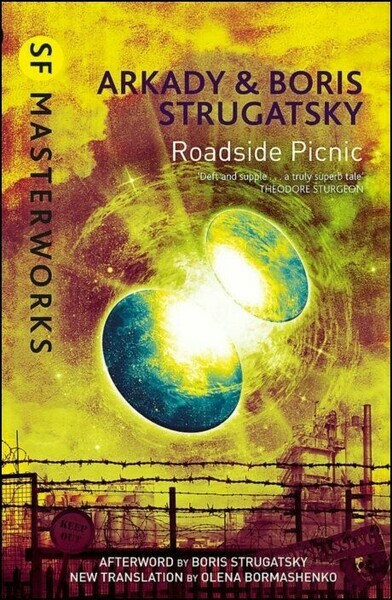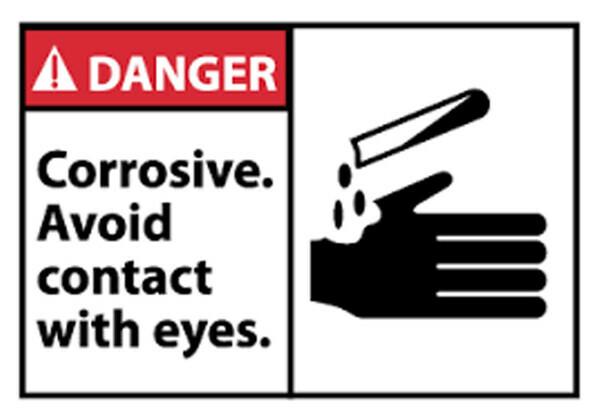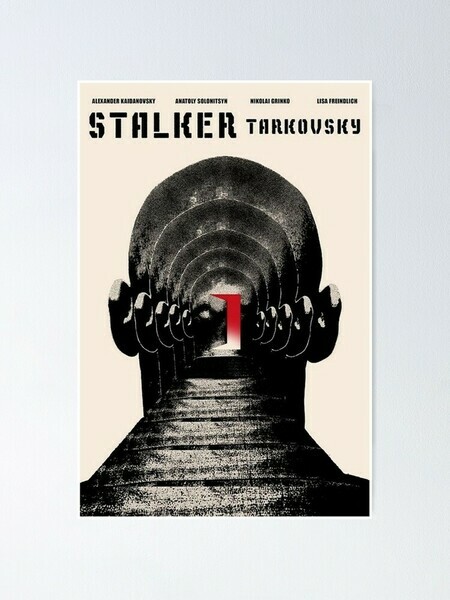BLOG/WRITING
Roadside Art-Picnic

A cover of Roadside Picnic appearing to depict an artifact called a 'Full Empty'.
In 1973 the Soviet Russian science fiction novel Roadside Picnic, by brothers Arkady and Boris Strugatsky was published. The movie Stalker by Andrei Tarkovsky was based on the novel. In the novel, aliens have very briefly visited Earth; passed through as much as passed by. The locations of contact, called 'Zones' have been littered with technologically advanced incomprehensible artifacts with mysterious and often dangerous qualities. The original use for the objects is not known. So-called 'Stalkers' take risks to enter The Zone and retrieve artifacts abandoned by the aliens. They then sell them. Scientists access the artifacts and experiment with them at great risk of catastrophic results but occasionally with wondrous outcomes; a kind of gambling where they are sometimes able to find applied uses, for example as energy sources or as medical interventions. The novel title is a metaphor, outlined by the character Dr. Valentine Pillman. It is as though aliens have pulled over at the side of a highway and they...'light fires, pitch tents, turn on the music. In the morning they leave. The animals, birds, and insects that watched in horror through the long night creep out from their hiding places. And what do they see? Old spark plugs and old filters strewn around... Rags, burnt-out bulbs, and a monkey wrench left behind... And of course, the usual mess—apple cores, candy wrappers, charred remains of the campfire, cans, bottles, somebody’s handkerchief, somebody’s penknife, torn newspapers, coins, faded flowers picked in another meadow.' None of the litter left behind makes any sense to the resident life forms.
The Roadside Picnic is a wonderful metaphor for the imagined existence of technologically advanced alien artifacts, but it also seems an excellent one for visual art and images. We have no idea why we make visual art (certainly I don't), and very little knowledge of the inner 'space' (vs. outer space) from which it comes. Traditionally Muses (aliens of a sort) delivered inspiration as ineffable as the artifacts in the novel, and the Muse could be dangerous and destructive to the person possessed by them. During my formation as a visual artist the notion of an artist at risk of damage by inspiration still existed and could be witnessed, often in my drug and alcohol savaged art instructors. It was as though the artistic process was destructive of the individual seized by inspiration, as though knowledge and vision was an 'information hazard'. Indeed art itself could be viewed as dangerous. Twentieth century artists seem to regularly plunge to Nihilist depths of depression, alcohol and drug addiction. Danger and risk seemed to be a byproduct of the art occupation and even the powers of observed art itself, not unlike the observed objects in 'The Zone'.

Art objects and images had and perhaps still have great power. We find uses for them such as to sell products in advertising, hang on walls to fill space, put on plinths, not fully knowing where their inspiration comes from or why they function as they do. Sometimes it is their sheer uselessness that makes art objects so mesmerizing; art for arts sake. This is not so unlike the artifacts from The Zone in the novel; the 'So-so's', 'Shimmers', 'Jolly Ghost's', 'Empties', 'Rattling Napkins', and 'Lobster Eyes' observed and retrieved by Stalkers.
As a denizen of the mid to late 20th century when Roadside Picnic was written I readily accept that visual art, including film making should not be explicable. I relish the ineffable and irrational nature and mysteriousness of visual art and images, of how they can communicate mutely, without 'saying something'. I can still leave a movie or an art exhibition with no clear understanding of what it was about and be grateful to have simply experienced exquisite craftsmanship and feel stimulated to have glimpsed some meaning or even truth, as through a glass darkly. In ages past those Muses who delivered inspiration were aliens of sorts. Our own minds seem like aliens. We have no clear idea how our minds work, transmit insights or have powers. More and more research psychology and neuroscience suggests that we are not as self aware and conscious as we delude ourselves into believing, and that our tiny slivers of awareness simply rationalize what we do unconsciously and automatically. I have no clear idea what I've been doing for 40 years as an artist and I'm not sure I actually want to, because I believe it would be counter productive magic notions and ineffabilities still attached visual art.
I have no idea of what I'm trying to communicate in this post.
After a usual frantic life humans lead I'm now in my final years. Despite being convinced for most of my working life I knew what I was doing I now realize I have no clear idea what my persistent creation of drawn, painted and printed images was for or about. I was like a stalker in The Zone fetching imagery from aliens installed in my subconscious. The quality of the loot was unpredictable, sometimes an applied use could be found for it, sometimes it was useless or even dangerous. Roadside Picnic, The Zone and Stalkers might be useful metaphors not just for art but for life itself, and the life of the artist.

A poster for Tarkovsky's Stalker movie.